
Dynamic features of Guyana’s ‘potentially massive’ oil and gas discovery
In today’s column I introduce the second topic in the series appraising Guyana’s economy in the coming time of oil and gas production and export.

In today’s column I introduce the second topic in the series appraising Guyana’s economy in the coming time of oil and gas production and export.

Introduction Based on the medium and long-term outlook of the world’s energy market, today’s column introduces two further policy lessons to guide Guyana’s planning for future oil and gas production and export.

The question I respond to in today’s column is: Does the prevailing world energy outlook offer useful policy lessons for Guyana’s benefit, in anticipation of its oil and gas production coming on stream in the early 2020s?
Introduction Last’s week column identified several key trends on the demand side of the global energy market.
Introduction Today I begin to address the third and final sub-sector in this long-running series of columns on the extractive industries sector of Guyana.
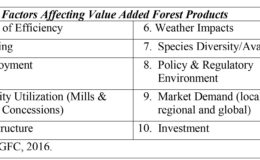
Introduction Today’s column concludes my discussion of Guyana’s extractive forest sub-sector.
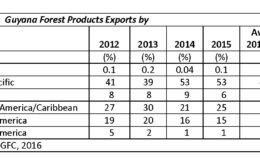
Introduction Today’s column comes at the point where I am left only to discuss the export performance of the extractive forest sub-sector over the last decade (2006-2015).
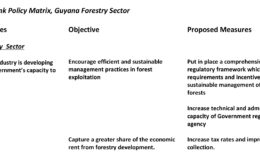
Introduction Today’s column closes the discussion we are having on production of timber and non-timber products in Guyana’s extractive forest sector over the past decade (2006-2015).
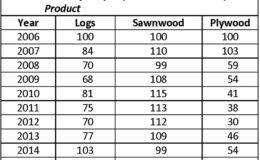
Introduction As I have opined before, the microeconomic information supplied in last Sunday’s column, depicting employment levels within the extractive forest sub-sector, generally conforms to what might have been anticipated, given the weak, erratic, and declining economic returns exhibited by the sub-sector, when analyzed from a macroeconomic/national accounts perspective, for the decade 2006-2015.
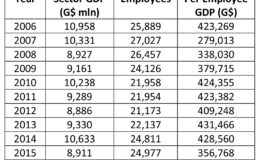
Introduction Today’s column focuses on economic data for the forest sector, other than those derived from Guyana’s National Accounts, which have been already introduced.
Regrettable underperformance Readers would have no doubt readily gleaned from the subject matter which was addressed in last Sunday’s column, whether it was a boon for Guyana or a regrettable loss as I had represented it, for a country of its size, vulnerability, and poverty, which was also exceptionally well endowed with forest resources, to be seemingly boastful of its historically comparative low deforestation rate.
Introduction My recent columns have argued that, despite a relatively rich forest resource endowment, and relatedly a very high standing in the world of forests, Guyana has had historically one of the world’s lowest deforestation rates.
Dilemma Last week’s column revealed what is perhaps a crucial dilemma facing Guyana’s forests.
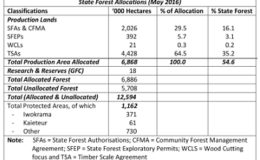
On-going series The recent media release by ExxonMobil to the effect that the findings of its second offshore well (Liza 2) appear to confirm the substantial size of Guyana’s potential oil and gas reserve, presents me with a welcome opportunity to remind readers that my recent columns on Guyana’s extractive forest sub-sector are directly linked to an ongoing series dedicated to evaluate Guyana’s future as an intensive natural resources extraction-dependent economy, in the coming time of large-scale oil and gas production and export.
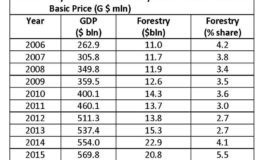
Erratic Last week’s column highlighted what I consider to be a most distinctive feature of the extractive forest sub-sector’s performance in Guyana’s economy, during the past decade.
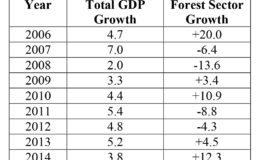
Introduction At present, several prominent geographers and forest analysts give strong support to the forest transition hypothesis, which I have been evaluating in recent weeks.
Hypothesized relationship A pressing question that arises from last week’s brief introduction to the forest transition hypothesis is whether it offers useful guidance as regards future trends in Guyana’s extractive forest sector.
Introduction Today’s column reflects on a well-known hypothesis (forest transition theory), developed in research on the dynamics of forests in human societies.
Economic growth and net forest loss This week’s column continues with the exploration of the relationship between, on the one hand, Guyana’s population and real national income growth, and, on the other, its rate of net forest loss/deforestation, over similar long-term periods, (that is roughly from the early 1960s to the early 2000s).
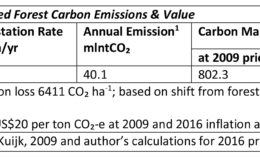
Introduction Last week’s column identified ten leading considerations which are responsible for the high standing of Guyana in the world of forests.
The ePaper edition, on the Web & in stores for Android, iPhone & iPad.
Included free with your web subscription. Learn more.